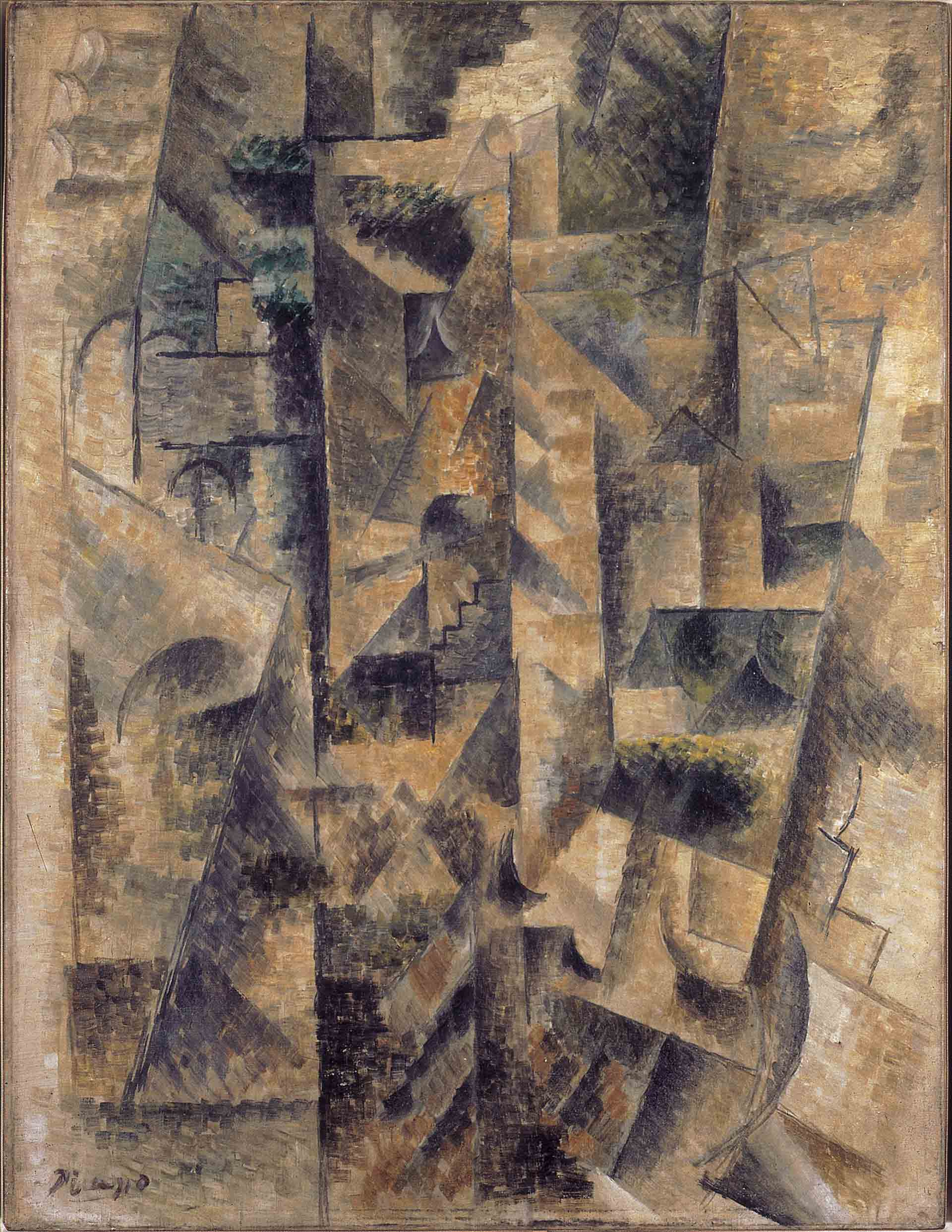
Landscape at Céret
"In my opinion to search means nothing in painting. To find is the thing". (1)
Pablo Picasso, Landscape at Céret (Paysage de Céret), Céret, summer 1911. Oil on canvas, 65.1 x 50.3 cm. Solomon R. Guggenheim Museum, New York, Solomon R. Guggenheim Founding Collection, By gift 37.538. © 2011 Estate of Pablo Picasso/Artists Rights Society (ARS), New York
Introduction
Pablo Picasso (b. 1881, Málaga, Spain; d. 1973, Mougins, France), one of the most dynamic and influential artists of the 20th century, experimented with many different artistic styles during his long career, including the historic introduction of Cubism.
Cubism is widely regarded as the most innovative and influential artistic style of the past century. Inspired by the volumetric treatment of form by the French Post-Impressionist artist Paul Cézanne, Picasso and Georges Braque (1882– 1963) embarked on Cubism’s first stage of development. Although both artists worked independently in their own studios, they met frequently to discuss their progress and learn from each other. Beginning in 1908, Picasso and Braque deepened their relationship until it verged on collaboration. During the summer of 1911 they spent time together in the south of France in Céret, a popular artists’ colony. They compared their work and debated new possibilities. They were inventing a new style together, and both artists are credited for the development of Cubism. Some of their paintings are so similar that many critics find it difficult to tell them apart. As Braque would recall, “Picasso is Spanish and I’m French: we know all the differences that entails, but during those years the differences didn’t count" (Alex Danchev, Georges Braque: A Life [New York: Arcade Publishing, Inc., 2005], p. 117). The Cubist style emphasized the flat, twodimensional surface of the picture plane, rejecting the traditional techniques of perspective, foreshortening, and modeling as well as refuting time-honored theories of art as imitation of nature. Cubist painters were not bound to copying form, texture, color, and space; instead, they presented a new reality in paintings that depicted radically fragmented objects whose several sides were seen simultaneously. The monochromatic color scheme was suited to the presentation of complex, multiple views of the object, which was now reduced to overlapping opaque and transparent planes. Cubism led to abstraction and necessitated new ways of looking at art.
At its climax, Braque and Picasso brought Analytic Cubism almost to the point of complete abstraction. In Landscape at Céret, painted during that summer of 1911, patches of muted earthy color, schematized stairways, and arched window configurations exist as visual clues that must be pieced together. For this painting, as with all Cubist works, the total image must be “thought” as much as “seen” (adapted from Jan Avgikos’s entry in the Collection Online).
1. Picasso, in Herschel B. Chipp, Theories of Modern Art: A Source Book by Artists and Critics (Berkeley: University of California Press, 1996), p. 263.
Preguntas
Before showing students Picasso’s Landscape at Céret tell them that they are going to see a work by the artist Pablo Picasso that he painted while staying in a town in southern France during the summer of 1911—a hundred years ago. On the Internet browse photos of Céret. Although some things about the town will have changed over a century, students should still be able to get a good idea of the terrain and architecture of the region. Ask students to imagine and perhaps create a list or sketch of what they expect to see in the painting Landscape at Céret.
Show: Landscape at Céret, 1911
What do you notice?
How is the painting different from what you imagined? Are there any ways that it is similar to what you expected?
How is this painting different from traditional landscapes?
What clues does Picasso provide to let us know that the subject of this painting is the town of Céret?
